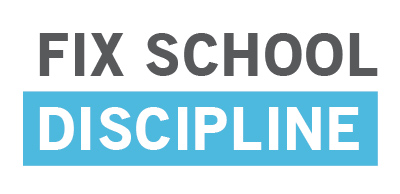National report reveals growth of school-suspension crisis
UCLA researchers have released the first national study that identifies the nation’s top 100 high-suspension school districts — and shows California schools still have a big problem.
Fifteen of the nation’s highest-suspending districts are in California, and the state is ranked 20th in the gap between suspensions of African American students (17.7%) and white students (5.6%). And California is 6th highest in suspensions of black students with disabilities.
The report confirms other nationwide trends: that some schools suspend more students than others, that African American students are most likely to be suspended, and that suspensions for students of all races have increased dramatically over the past 40 years.
Major findings from the report include:
- African American students are more than three times as likely to be handed out-of-school suspensions as are white children. Nationwide, one out of six African American students is at risk of suspension every year, compared with one in 14 Hispanic students and one in 20 white students.
- Suspension rates for students of all races have soared over the past 40 years. The percent of black students suspended went from 6% in 1972 to 15% in 2006. Suspension rates for Asian American, Latino and Native American students more than doubled over that same time, and white students went from just over 3% to nearly 5%.
- California’s 17.7 percent suspension rate of African American students was 0.6 percent higher than the national average; Illinois was highest at 25 percent, while the rates in Maryland and Arkansas, with significant minority populations, were 11 percent.

Out of school suspensions have soared over the past 40 years for students of all races. Source: UCLA Civil Rights Project
“The findings in this study are deeply disturbing,” wrote Gary Orfield, a professor of education and co-director of the Civil Rights Project at UCLA, in a foreword to the report. “Students who are barely maintaining a connection with their school often are pushed out, as if suspension were a treatment.”
Researchers say that out-of-school suspension likely contribute to higher dropout rates among students with a disciplinary record. In North Carolina, African American students are more likely than others to be suspended for using a cell phone, violating dress codes, or being disruptive in class. The data “should cast heavy doubt on assumptions that different suspension rates between groups merely reflect differences in behavior.”
The report also found reason for hope: more than 1,400 school districts suspend 3% of fewer of their African American students, and several states suspend fewer than 3% of students overall. Researchers wrote, “there are alternatives to the frequent use of out-of-school suspension and that they are in use in many districts throughout the nation. Simply put, large racial and disability gaps are not inevitable.”
Read the report: “Opportunities Suspended: The Disparate Impact of Disciplinary Exclusion from School”
In the News:
Los Angeles Times: “State schools suspend students at higher rates than average, study finds” (August 7, 2012)
EdSource Today: “Report pinpoints high-suspension districts” (August 7, 2012)
San Francisco Chronicle: “Policies proposed to boost boys of color” (August 8, 2012)
Education Week: “Researchers Sound Alarm Over Black Student Suspensions” (August 7, 2012)

